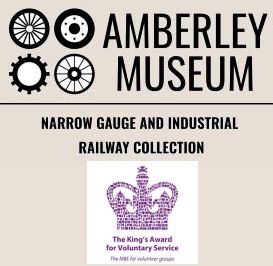

Autumn 2008
|
Redcar Sidings have been due for a revamp for sometime. The name derives from the old bus which can be found in the bushes across the road. This was operated by the Redcar in Tunbridge Wells and the bus is used by our bus volunteers as a home-from-home when they stay over on site. Redcar Sidings are part of the original industrial layout laid when the Museum was in its infancy and, apart from a minor realignment around 1990 have remained untouched ever since. They are the main point for loading and unloading visiting locomotives to Amberley and their alignment does cause problems for some of the larger lorries which arrive with locos for special events.
The sidings are approached along the track between the roadway and the Pottery. The line makes a left turn before splitting into two at a very light (14lb) point which has, frankly, seen better days.
The two tracks then run parallel to the roadway, leaving room for visitors to walk safely. However, the space between the two tracks is very narrow and for some of our volunteers it is a challenge to get between two lines of wagons on these tracks.
Looking back up the line towards the pottery, the overgrown, and industrial nature of this track is evident. We will endeavour to retain this atmosphere when we relay.
Two lines of parked wagons leave very little space. As there are no end stops on the inner track, wagons do tend to find their way off the end from time to time.
The sidings viewed from the point. In the background is the village garage and cycle shop.
There will be three sidings which will necessitate the removal of the trees and undergrowth. The sidings will also be better spaced for ease of use. The three-way point will be used to serve the sidings and it will be sited immediately in front of the camera position in this photo.
The area has been cleared of vegetation and other detritis - the sidings had settled quite a bit since they were laid in 1990/91.
The track crew arrive with the works train, .....
..... the blue BEV and two flat wagons, which carried some vital pieces of equipment - most importantly the Very Big Hammer.
A few bits and pieces had still to be removed - here the train is brought to the end of the siding to pick up a few sleepers.
The accumulated chalk and weeds (some call them wild flowers!) had to be cleared from around the fishplates.
But soon the first panel was being loaded for removal to the rail-stack.
The track was a mixture of metal-sleepered panels and rail spiked to wooden sleepers. Some of the latter rail is now being loaded.
Work on the second siding is taking place ......
...... and by the end of the day (Sunday 21 September) the site had been cleared back to the point.
View of the area from the buffer-stop end. The Museum's JCB is now on site to start levelling.
Oops - almost everything went to plan.
More employment for the angle grinder.
The end of the line - for the time being (24 September). Update - Wed 19 November Having concentrated our efforts since then on the three-way point (see separate news item) we have now returned to the location of the sidings to start preparing the site to receive the point and other trackwork. The first job has been to spread some hard-core to provide drainage beneath the track.
This has seen the resurrection of the Museum's ancient Lister petrol engined brick crusher. Needless to say this was not as straightforward as this statement suggests. The poor old thing refused all our efforts to get it started.
John Martin makes the umpteenth attempt with encouragement (?) from a number of other volunteers but the expertise of the Stationary Engine Department had to be sought. There was a slight delay here as we called them at a rather inconvenient moment - they were on their tea-break!
But time is not being wasted; Tim barrows in yet another load of bricks and other material.
But we eventually got some work out of the crusher and position of the 3-way point has been covered.
We moved the 3 way point into position using the mobile crane driven by Frank Glue - 26 November.
Reversing down the road to the site. Nearly there .....
..... but the Stone Crusher was in the way (we had used it for its designed purpose to get rubble for the ground under the point).
Part way into the site.
The point needs to come about 15 feet nearer the camera .....
..... so the crane had to be repositioned, after the removal of a Silver Birch.
Then back to lifting the point into its final position.
Ta-daaaah! We did it. Don't they look pleased with themselves. (Thanks to Peter Trinder for the pictues)
The work continued into 2009 and the continuation and, hopefully, completion |